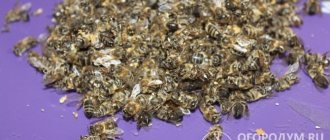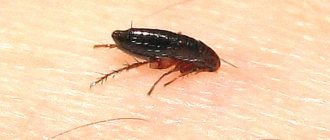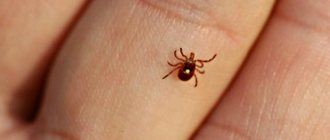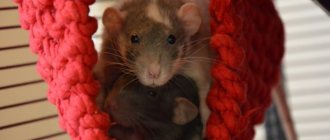Something about the life of rats.
Rats are rodents that few people love. On the contrary, everyone strives to exterminate such pests. And although they live relatively short, for some reason everyone considers them very tenacious. How long do rats actually live? And what determines the lifespan of such animals?
What kind of animals are these
The gray rat or, as it is called differently, pasyuk, is a mammal of the order of rodents and the genus of rats. This species is considered cosmopolitan, that is, accustomed to urban living conditions, as well as synanthropic, that is, living in places close to where people live. Body length (excluding tail length) averages from 15 to 25 centimeters. The largest rats, by the way, live in the CIS countries. The weight of one adult individual is about 150-400 grams. The tail length varies from 15 to 19 centimeters and usually constitutes approximately 70-80% of the body length. The rat's muzzle is quite wide and slightly pointed, its ears are small. The hind legs are more developed than the front legs. The color of rodents is dark gray. The teeth are quite strong, which allows these animals to chew wires, wires and other products made of durable materials. To get rid of rodents, call +79209184239.
Where do rats live?
Rats are ubiquitous, that is, all over the globe. The only place where you won’t be able to meet such a rodent is Antarctica. Rats do not live in polar deserts or eternal ice. In all other places they live and feel comfortable, and also continue to settle (including with the help of transport) and develop new territories.
As for specific habitats, rats are most attracted to places that have at least some kind of food. These include barns, warehouses, food storage facilities, garbage dumps, and so on. Rodents can be found in the basements of residential buildings, in private houses and barns, and even in apartments. Wild rats, living in warm countries, often settle near bodies of water. Most rodents choose areas that involve places that are inaccessible or difficult for people or animals to reach, that is, areas with dense vegetation, scattered rocks, or voids in the soil.
Since the lifespan of rats is also influenced by lifestyle, it is worth talking a little about it. In the wild, these rodents dig burrows, and in industrial areas they live in spaces under the floors. Rats often build nests using paper, wool, sticks, grass, rags and other available materials.
Rats are active mainly at night, and their excellent vision allows them to navigate in space even in complete darkness.
Such animals do not become attached to one place and easily change it to another, more favorable one. Rats can lead both a solitary and group lifestyle. There are also entire colonies of up to several hundred individuals. There is even a hierarchy among males in the colony. In addition, such rodents can mark and guard developed territories and occupy them for several years in a row.
A rat can walk about 10-15 kilometers in a day. In addition, these rodents can swim, dive, and even stay under water for quite a long time and hunt. These animals easily adapt to any conditions and can withstand significant temperature changes and even exposure to radiation.
How long rats live is also influenced by their diet, so it’s worth writing a few words about that too. Since the diet of such rodents must necessarily contain animal proteins, they eat other small rodents, and also willingly consume fish, amphibians (for example, frogs) and mollusks. But rats also do not refuse plant foods, such as seeds, grains and succulent parts of plants. City rats in most cases consume waste and garbage, and can eat carrion (the remains of animals and birds). There are frequent cases of cannibalism, that is, eating their relatives (most often hungry individuals do this).
Rats are very fertile, which is probably why their lifespan is so short. Fecundity increases as the animal matures and reaches its peak at the age of 1-2 years. But sexual maturity occurs earlier (at 3-4 months), although most females begin breeding only at one year of age. During the period of estrus (reproduction), one female mates with several males. Pregnancy lasts on average three weeks. Many rodents die at an early age, some are eaten by the mother (especially the weakened and sick) or the father (he can destroy almost the entire brood).
How long do rats live?
How many years do rats live? Their lifespan is short. Under favorable conditions, it can range from 2 to 3 years. But many individuals do not live to see 2 years and die at 1-1.5 years. But if the rat has been domesticated (this sometimes happens), then it can live up to 4-5 years. As a rule, old rats have several diseases and neoplasms on organs. In addition, they almost completely lose activity and literally survive, rather than live.
What affects the lifespan of rats?
The lifespan of rats can be influenced by the following factors:
Nutrition. For example, the consumption of waste and cannibalism have an extremely negative impact on life expectancy.
Lifestyle. If a rat is forced to often hide from predators or cope with difficulties, then it will live less than an individual leading a relatively calm and measured life.
Living conditions. Thus, rodents that live in places with sharp temperature changes or in too hot or, on the contrary, cold regions usually do not live to be 1-1.5 years old. At the same time, rodents living in favorable climatic conditions can live 2-3 years.
Do rats and mice live in the same cage?
You can feed him to the point where he can't look at the mouse as food. But overeating them, like people, has the same consequences. They are also smart and may simply refuse to eat, so don't overfeed them.
And also, don’t forget about competitions. This is another reason to destroy your opponent. Among mice there are quite active individuals, and the rat, as a smart animal, always attacks first.
These rodents should not be placed in the same cage at all - they are incompatible animals. They belong to the same class of rodents and even to the same family of mice, but they are in the same food chain and do not have the same developmental value. The result is catastrophic.
Signs of rats in the house
Spotting smart animals is difficult, but not impossible. If rats appear in the house, they will:
- feces;
- ammonia smell;
- corpses of rats and mice;
- chewed food bags.
One female can reproduce up to 12 times a year. Each litter consists of 8 to 12 individuals. In a year, only one individual will bring more than fifty new “fighters”, and given that there are about 20 animals in the flock, the size of the “army” becomes threatening.
If you see any traces of a rat in the house, be sure to take action. Trace the path to the nest to clearly understand the location of the enemy. If you catch an animal by surprise, you should not rush at it with your bare hands, as this risks bites, bites and serious scratches.
How long can a rat live without water and food?
Representatives of this species of rodents naturally settle in or near places with plenty of food and water. That's why there are so many of them in ditches and near rivers.
In domestic conditions, without water, an animal dies within 24 hours, and without food - within 3-4 days. Therefore, they must have constant access to food and drink. It is not recommended to feed them on time and in portions.
She can only live without water if her diet includes watery fruits, in large quantities, every day.
How long do rats live at home, decorative and wild?
Most of us know about these animals as living in ditches and drains, spoiling crops in barns, carriers of infections, and at the same time very smart. Those who are lucky enough to own such a pet at home, regardless of the breed, including gray ones, will unanimously say what a smart and funny animal it is. You will never be bored with him. Just before you get one, you should know that the opinion about the unpretentiousness of this animal is a myth. At home, it requires a lot of attention and care; people can often get sick, including cancer. Life expectancy directly depends on the conditions of detention.
How long do Sphynx rats live?
Sphynxes live on average from 1.5 to 2.5 years. Hairless rats are more delicate creatures than their other relatives and require special, more careful care. This affects the lifespan of both an individual species and one individual in particular.
Features of education
- They are hypoallergenic, which is a big advantage;
- The skin must be constantly dried and secretions removed;
- Sharp claws should be trimmed as they can damage the animal;
How many years do Djungarian hamsters live in the wild?
The habitat of exotic animals has long been no longer limited to the Chinese provinces. Wild hamsters of this breed have taken root in many regions of Siberia, Kazakhstan, and the Caucasus. The animals are small enough and careful not to catch the eye of humans. Their body length is approximately 10 cm. In the wild, small rodents are exposed to daily threats from larger competitors for food and predators.
In nature, Djungarian hamsters are constantly in search of food. They run over 10 km every day to provide themselves with the necessary amount of food. During the warm season, restless dwarfs actively accumulate food reserves for the winter and create extensive storage facilities in their burrows.
Experts believe that regular stress, constant tension, and every minute expectation of an attack negatively affect the health of hamsters and shorten their lives. As a rule, the Djungarian hamster lives in freedom for no more than one and a half years. Some individuals have high immunity and live 2–2.5 years. Sometimes the age of a hamster can be determined by the number of scars on the body of a hamster. The lifespan of animals directly depends on the presence and combination of several factors:
- amount of food in the area where rodents live;
- physical condition of hamsters;
- predator population density;
- weather.
Quite often, wild hamsters suffer from hypothermia or injuries. As a rule, such dwarfs die quickly, despite their age. Hamsters become prey for foxes, stoats, owls or snakes.
How to tame?
An interesting feature of domestic rats is their ability to be trained and tamed. This is due to the high intelligence and subtle intelligence of animals. The rat will not refuse regular contact with its owner and will happily go into the hands of the owner as soon as the adaptation process is completed after acquiring the animal.
The approximate time during which the animal will begin to respond to the voice and its name is about 3 days. The animal should get accustomed to the owner gradually, without frightening him. When the rat is already craving contact, it can be released for a walk around the apartment, but this process requires constant attention from the owner.
Best friends
Rats are very open and inquisitive animals that easily come into contact with humans. They are not difficult to tame.
Reproduction
Rats reach sexual maturity at 6 months of age and can be reproduced if there are two of different sexes. These animals are very fertile, and female rats mate every 10 days.
Rats mate within 1-3 hours, and pregnancy lasts 21 days. It is important to provide a pregnant woman with plenty of fruits and vegetables that contain essential vitamins. Before giving birth, the female is busy building the nest, carrying various materials, from paper to rags.
On average, up to 8 liters are born, each weighing only 7 grams. After giving birth, the female and her young should be moved away from other individuals. Newborns are fed with mother's milk for about a month, after which young people try adult food.
Rat babies are born naked, their fur appears on the 10th day, and their eyes open 2 weeks after birth. Young rats become completely independent at one and a half months of age.
How to determine the age of a rat?
Usually people project the age of animals onto human ages. To calculate the age of rats by human standards, you need to multiply the number of months they have lived by 2.5 and count the resulting figure as years. Thus, the age of 6-month-old animals by human standards is approximately 15-16 years. A one-year-old animal has 30 “human” years, a 2-year-old animal has 60, etc.
Kids
Experienced veterinarians and breeders are well aware of how to tell the age of a rat by visual signs. First of all, this is weight:
- Two-day-old pets weigh about 150-220 g.
- After a day, their weight increases to 210-310 g.
- Four-day-old females weigh about 230, and males about 280 g.
- At 5 days of age, males weigh 450-500 g, and females - 280-300 g.
Older individuals are distinguished by:
- The distribution of the fat layer - the “old men” have no fat on their backs, so their spine is clearly visible.
- The type of fur - in young rats it is shiny and thick.
- By the size of the incisors - the longer they are, the older the animal.
- By the appearance of the tail, the skin on it in older rats becomes rougher and rougher, and begins to flake off.
- Along the length of the tail. After 6 months, the tail begins to actively grow in rats - before that it is shorter than the body.
Dangers of a pet rat
Very often, rats living in the house do not live at the appointed time. This is mainly due to the negligence of their owners.
The most common factors leading to untimely death of rodents are direct contact with domestic animals such as dogs and cats. These rodents can also die from chewing electrical wires or eating houseplants that are poisonous to them.
Therefore, it is very important, if you decide to become the owner of a decorative rat, then you need to pay great attention to it, as well as provide a balanced diet and proper care. This is the only way to prolong the life of an animal.
What affects lifespan
The lifespan of rats, both wild and ornamental, depends on several factors:
- Living conditions . Pasyuki, as a rule, spend a large amount of time in landfills and sewer systems. It is not surprising that in conditions of complete unsanitary conditions, animals often suffer from infectious and parasitic diseases. Accordingly, their life expectancy is noticeably reduced. Domestic rats are luckier - usually the owners of rodents carefully look after them. However, not always. It happens that decorative rats die in the absence of proper care.
- Heredity . Offspring born from healthy parents have better health and live longer. On the contrary, baby rats whose mother and father suffer from many diseases are born weak and, at best, die from illnesses before they even live a year. In the worst case, weak offspring are eaten by their own parents.
- Presence of enemies . In their natural habitat, pasyuki act both as a predator and as a prey. They often become prey for cats, dogs, large birds, and snakes. Decorative rats, due to the carelessness of their owners, also sometimes become victims of attacks by domestic cats.
- Food quality . Loving owners of decorative rats usually provide a balanced diet for their pets. Pets receive not only industrial feed, but also natural food containing all the necessary micro- and macroelements. While the pasyuki are interrupted by anything. In populated areas, the basis of their menu is food from the garbage dump. Therefore, wild rats do not receive enough nutrients, which negatively affects their growth, development and overall health.
- Destruction by man . This point also applies only to wild rats. From time immemorial, humanity has been at war with small pests. To destroy voracious rodents, all means are used - traps, poisons, ultrasonic repellers, repellents, cats. And when protecting crops, farmers use poisons that cause mass destruction of rodents - rodenticides. Millions of rats die every year as a result of human pest control.
- Availability of company . Rats are social animals; from the first days of their lives they are accustomed to living in packs. Relatives closely interact with each other - they engage in grooming, warn of danger, and help weakened individuals defend themselves. Therefore, at home, rats should also be kept in groups. However, not every owner is ready to take care of several pets at once. As a result, the lonely animal feels very bad, becomes sad, and dies a few months later for no apparent reason.
Why do rats live short lives?
The lifespan of various animal species is determined genetically. It depends on the reproductive capacity of the animal. Rats can breed from 1.5 months. A rodent can have up to 14 individuals in a litter.
A lactating rat is ready to become pregnant and give birth to a newborn. For this reason, animals of different sexes should not be kept in the same cage, as this creates additional stress on the female.
Another reason for a short life is a fast metabolism. This can cause the rat to die without food within 2 days.
Diseases of domestic rats that most often kill rodents
- Respiratory tract diseases.
This is the most common health problem in rats. Pay attention to discharge from the eyes and nose, as well as sneezing.
Most respiratory infections are bacterial in origin and can be treated with antibiotics. Viral infections require good supportive care, such as high-quality nutrition and appropriate cage conditions.
To prevent respiratory infections, the rat cage should be kept clean and well ventilated.
- Cancer.
Fortunately, most tumors in pets are benign. Cancer is more common in female rats. It usually appears on the mammary glands from 18 months, because this is when female rats stop ovulating.
If you feel a lump under your pet's skin, contact your veterinarian. There are various treatment options, including surgery to remove the tumor.
- Skin parasites.
Rats are most susceptible to skin mites. The incidence of skin mite infections can range from a few to a complete infestation.
A few mites are common on most rats and are not a problem. However, if the animal is stressed or sick, it is susceptible to infection. This can be treated with medications. But prevention is always better.
The rat's cage should be cleaned and disinfected frequently to prevent mite growth. Additionally, you should feed your pet a proper rat diet and try not to let it become stressed.
What is the danger of rats in the house?
The first is an unpleasant appearance. In nature, some individuals reach a length of up to 40 cm, but this is with a tail. Seeing this in an apartment or house is an unpleasant sight. But this is not the worst thing:
- Rats carry diseases that are extremely dangerous to humans. These are tuberculosis, rabies, cholera, jaundice, etc.
- Rodents, without a twinge of conscience, will eat all the supplies in the closet; they will not disdain pet food, wiring, insulation, decoration and furniture.
- Rats in the house leave feces, urine, where there are a lot of worm eggs, parasites. Pests carry fleas and ticks on wool.
Cases of rodent attacks on humans have long been known. When squeezed into a corner, the rat will defend itself. She can jump, scratch, bite. An infection from the mouth or claws will get into the wound and the matter can end very sadly. It's even worse when rats appear in a house with small children. The smell of babies is incredibly attractive to rodents, so it is worth keeping in mind and applying methods on how to get rid of rats in the house.
What else does life expectancy depend on?
How long a rat will live in the house largely depends on its external characteristics and breed. For example, bald and sickly animals very often suffer from colds and are prone to problems with digestion and thermoregulation.
Therefore, they delight their owners with their presence in the house for a year shorter than other species. For example, Satin (their fur is very shiny), Dumbo (short, round ears) and Rex (wavy fur) rats do not require feeding or grooming, so they live up to 3-4 years.
The lifespan of rats directly depends on their diet and living conditions. For example, rodents can consume large amounts of food and do so continuously, causing them to gain weight over time and develop numerous diseases.
Interesting!
The oldest rodent to live to be 7 years old was included in the Guinness Book of Records.
Therefore, the role of the owner who wants to prolong the life of the rat is to limit the amount of food eaten, promptly remove food debris from the cage and keep the cage clean. Periodically disinfect the rat house and eliminate its odor.
For healthy teeth of a rodent, you need to put tree branches, stones, pieces of salt and chalk in its cage. Veterinarians also advise communicating more with your “companion”: take him in your arms, treat him with sweets: dried fruits, cheese, cottage cheese and others. Domestic tamed rats that feel the attention of the owner, eat normally and do not get sick can live up to 2.5-3 years.
Rat lifespan
To find out how long a rat can live without food or water, it is worth considering its features. The lifespan of rodents is short by human standards.
In favorable conditions, where there is water and food, the animal can live from 2 to 3 years. But many rats do not live to be 1-1.5 years old. This applies to representatives who live in the wild.
The short life expectancy is constantly due to danger, lack of food and other unfavorable factors.
Domesticated rats can live up to 5 years. As rodents age, they develop diseases that cause them discomfort. Over time, they stop being active, try not to leave the house, and sit in the corner. For this reason, this life will feel like survival.
According to scientific research, it has been found that the lifespan of wild rats is half that of their domestic counterparts. A rodent that lived for 7 years was included in the Guinness Book of Records.
If you try, you can extend the life of pet rats by 1-1.5 years.
To do this, you need to provide comfortable living conditions and take the following important measures:
- regular cage cleaning;
- washing bowls and drinking bowls;
- removing food debris from the cage;
- feeding with correct and complete food;
- disinfection of the pet’s home;
- The rodent should be regularly picked up, stroked, and treated to fruits, vegetables, and a piece of cheese.
Video
Rat without water. Interesting Facts
Without water
Many people have probably thought more than once about how long a rat can live without water, but it’s not that long. Although it is a tenacious animal and can quickly adapt to harsh conditions, fluid is an important factor for it.
Without it, a rodent will not live longer than 2-3 days. And the pet will die within 24 hours.
The daily dose of water for rats should be 30-40 ml. If you want to prevent your pet from dying prematurely, check the water bowl regularly and add liquid if necessary.
How do the life spans of different breeds of rats differ?
To date, several breeds of rats have been bred, differing in the texture of their fur, color and location of their ears. There is a breed of tailless rodents. Although it is debatable whether they can be identified as a separate breed.
If we take some of the most famous breeds, we get the following results:
- Standards are rats, similar to wild rats. They can have different colors, for example, the blue rat is distinguished by the azure shade of its fur;
- Hairless sphinxes are animals without hair;
- Rex has short curly hair;
- Double Rexes are shedding rats with varying hair lengths;
- Fools are animals with big elephant ears;
- There is no tail;
- Husky is the color of a dog of the same breed;
- Atlas - animals with thin, glossy fur.
This is a rough list that will differentiate the different races based on their strength.
White rats of different breeds are less likely to live. This is because they were bred as laboratory animals, so they have some damage in their genome. Animals rarely reach the age of 2 years.
Sphynxes are quite sensitive. Lack of fur increases the risk of skin damage and associated infections. The naked body suffers from temperature changes and sunburn.
People without a tail have no balance or rudder, which increases the risk of injury. The tail also serves as protection for the back of the animal's body.
Who are Dumbo the rats?
Dumbo rats - this breed is considered one of the “young” ones; it was bred in 1991 in California. Dumbo rats are distinguished by their large, rounded ears; it is because of their resemblance to the Disney hero Dumbo the elephant that this breed got its name.
Decorative breed of domestic mice
Dumbo rats are a decorative breed of domestic mice, the name of which appeared due to the specific shape of their ears, which resemble the shape of the ears of a baby elephant from the popular cartoon “Dumbo”.
Why do animals suddenly die?
The life of a free-ranging animal is dangerous. The house is full of inedible detergents and cleaning products, the wires are electrified: you need to understand that a rat on its teeth will definitely try everything in sight.
Homeowners don't always watch their step and tend to move heavy furniture wherever a curious animal happens to wander. An unfortunate fall after climbing curtains or carelessly stepping onto a balcony can be fatal.
Terriers, dachshunds and cats with strong hunting instincts pose a deadly threat to a domesticated rodent. A spoiled pet can escape through an open door into the street, where it has no chance of survival. All these troubles can be avoided by keeping your pet in a cage and walking it under supervision in a fenced area.
Especially trembling animals can go into cardiac arrest after being frightened by something.
Housing arrangement and general living conditions
Rats definitely need periodic exercise and opportunities to be active. In a house or cage that is too small, the rodent will not be able to move as often as necessary. This will lead to gradual muscle atrophy and obesity.
In a cage or house where pet rats are kept, the room should be kept at a normal temperature.
How to extend your pet's life
Considering that the average lifespan of a rat is 2 years, you can try to extend this period by surrounding the animal with attention and care.
Features of a specific breed
In breeding, certain parameters are taken as a basis. Including:
- coat color and length;
- shape and position of the ears;
- presence of a tail;
- eye color and much more.
However, appearance is determined by genes, which often negatively affect the health of rodents. For example, white rats with red eyes are prone to cancer and allergies, and low immunity rarely allows them to live 1.5-2 years.
The long-tailed one among the breeds is the Dumbo. Rats with cute round ears live up to 3-3.5 years. Blue rats and Huskies have approximately the same life expectancy.
The lifespan of a sphinx depends on the conditions in which they live. The lack of fur makes them so sensitive to temperature changes that even slight hypothermia can lead to death or serious pathologies. The average lifespan of a Sphynx is 1.5 to 2 years.
Rex and standard breeds usually live up to 2 years.
Dental health
Pet rats' teeth grow throughout their lives. If a rodent's diet is dominated by soft and moist foods, natural grinding does not occur and eating becomes difficult or impossible. Therefore, it is important that solid foods (grains, raw vegetables) make up the bulk of the diet.
Genetics
Unfortunately, most laboratories still use rodent bioassays as a method for testing medical and other drugs. In this case, the animals not only suffer from developing pathology and side effects from injection drug use, but are also subjected to specific crossbreeding, as a result of which they acquire genes for obesity, diabetes, cancer and other diseases.
Inbreeding also negatively affects life expectancy. Initially, the offspring begin to show developmental abnormalities. Then such families gradually degrade due to an increase in the number of non-viable offspring.
Pedigree is most often allowed when breeding rats that are intended to be fed to other animals. This also happens to unscrupulous or inexperienced breeders who do not have time to separate animals after feeding or who keep large numbers of rodents in one cage to save money and make a “quick” profit.
It is impossible to completely insure yourself against buying a rat with a genetic disease. That's why it's good to buy animals through special clubs where people raise pets responsibly.
Disease Prevention
It is easier to prevent the causes of a disease than to cope with its consequences. Proper care will prevent many problems. The rat cage should be cleaned regularly and washed with a mild disinfectant solution. The water in the drinker must be clean and changed daily. It is best to use regular, filtered water. Food waste that decomposes and can cause illness should be removed regularly.
Avoid pine fillers. Not suitable for rodents. You can use corn mulch or simply place toilet paper on the animals.
A newly acquired pet should be quarantined separately to prevent it from becoming infected by the old cage occupants. Buy an ultraviolet lamp to disinfect the room. Look for a rodent veterinarian to turn to when sick.
Proper nutrition
Life expectancy in the wild directly depends on the nutrition of rodents, often insufficient or poor nutrition:
- Food source from landfills.
- It feeds on small animals and insects.
- Prevalence of plant foods.
- Cannibalism - in conditions of hunger, rats often eat their comrades.
Once settled in or near cities, many rats are killed by poisons that people distribute to control the animals.
For a rat to live a long and healthy life, it should eat about 80% grains and about 20% vegetables/fruits/greens. Clean drinking water must be available at all times.
A pet rat will also benefit from using a mineral stone to polish its teeth.
Young rats should be fed boiled meat and eggs at least once a week. Sometimes you can pamper them with nuts. Sprouted grains have a general strengthening effect and prevent many diseases, so they are also recommended to be added to the diet of decorative rats.
Health monitoring
The habit of observing your pets will allow you to learn a lot about them, while at the same time noticing signs of an incipient disease. If he is not eating well, stops playing, appears lethargic, or has discharge from his nose or eyes, and his coat is unkempt and unkempt, seek immediate medical attention.
Infectious diseases can progress very quickly and can lead to the loss of the animal. Diarrhea not associated with excess vegetables also indicates illness.
Examine your pet's stool; it may contain helminths - worms. A rat that is itching a lot should be warned because there is a risk of parasitic disease. You should also be wary of rodents that are prone to hunchbacking, a common problem in aging rats. Older pets are prone to cancer, heart attacks and strokes.
Dangers of a tame rat
Often, decorative rats die due to the fault of the owner; this can be either an accident or insufficient protection.
The most common causes of premature death:
- Other pets - attack by cat, dog or bird.
- Eating inedible objects, poisonous plants, detergents.
- Falls from a height, etc.
It is important to remember that we are responsible for those we tame. Responsibility for the life and health of the animal lies entirely with its owner.
How long do rats live at home, decorative and wild?
Most of us know about these animals as living in ditches and drains, spoiling crops in barns, carriers of infections, and at the same time very smart. Those who are lucky enough to own such a pet at home, regardless of the breed, including gray ones, will unanimously say what a smart and funny animal it is. You will never be bored with him. Just before you get one, you should know that the opinion about the unpretentiousness of this animal is a myth. At home, it requires a lot of attention and care; people can often get sick, including cancer. Life expectancy directly depends on the conditions of detention.











